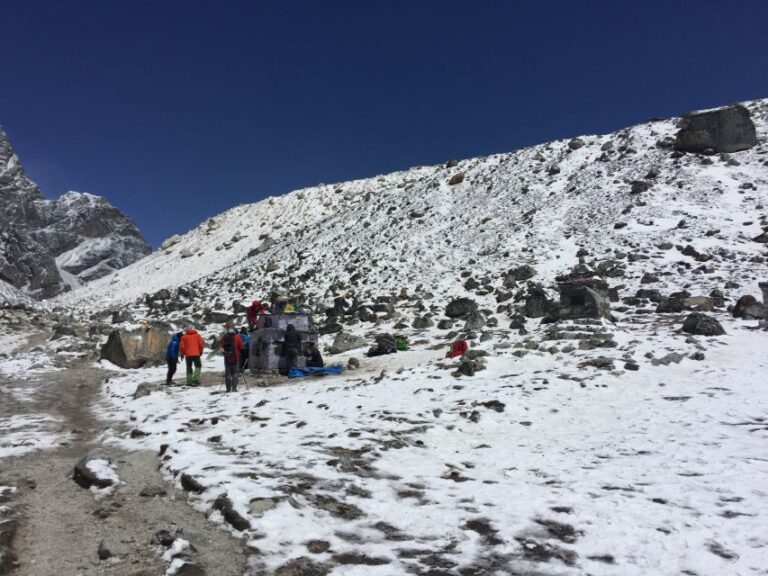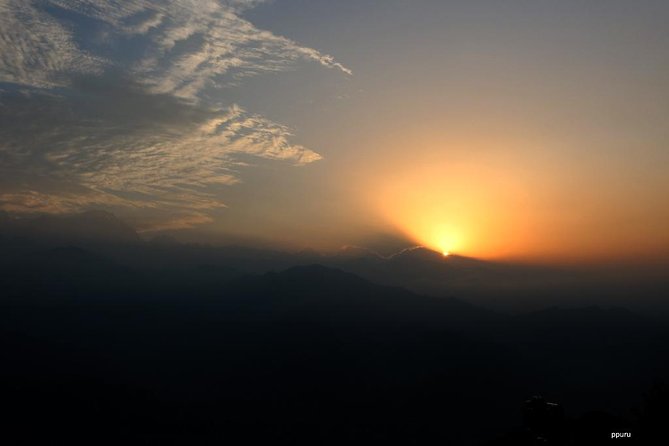Classic Everest Base Camp Trekking
As the sun rose over the snow-capped peaks, the trekkers trudged onwards, each step bringing them closer to the fabled Everest Base Camp. The allure of this classic trek lies not just in the destination but in the transformative journey it offers to those who dare to tread its paths.
From navigating rugged terrain to forging bonds with fellow adventurers, the Everest Base Camp Trekking experience is a test of endurance and spirit. But what hidden challenges await these intrepid souls beyond the physical trek?
Just The Basics
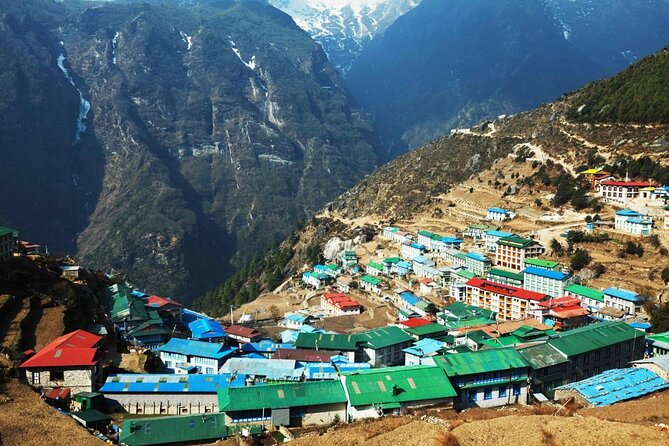
- Witness breathtaking Himalayan views and immerse in Nepalese culture.
- Navigate rugged terrains with varying altitudes and challenging paths.
- Benefit from local guides, permits, and safety measures for an enhanced trekking experience.
- Prepare for altitude sickness, weather changes, and ensure proper gear and insurance coverage.
It's also worth checking out some other tours and experiences nearby.
Trek Highlights
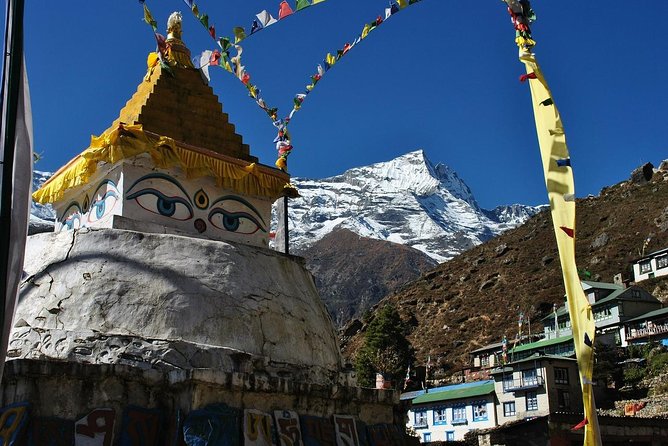
Embark on the Everest Base Camp trekking adventure to witness breathtaking views of the Himalayas and learn about the rich cultural tapestry of Nepal. The trek offers a mix of challenges that range from navigating rugged terrains to acclimatizing to varying altitudes, providing an exhilarating experience for adventure enthusiasts.
Trekkers will encounter steep ascents and descents, rocky paths, and high mountain passes, testing both physical stamina and mental resilience. On top of that, the journey isn’t only about conquering natural obstacles but also about delving into the cultural essence of Nepal.
Along the way, hikers will have the opportunity to interact with local Sherpa communities, visit ancient monasteries, and partake in traditional ceremonies, creating unforgettable cultural experiences that complement the trekking challenges beautifully.
Accommodation and Meals
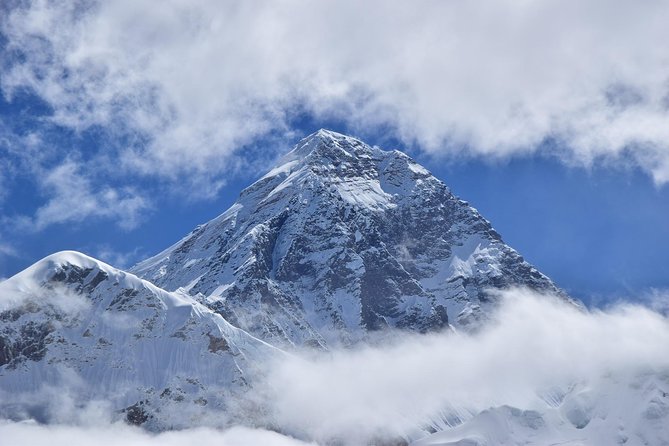
During the Everest Base Camp trekking adventure, trekkers will be provided with comfortable twin-sharing hotel accommodation in Kathmandu and lodge or mountain teahouse accommodation throughout the trek, ensuring a restful stay and hearty meals along the journey.
Accommodation options vary from cozy lodges to traditional mountain teahouses, offering a glimpse into the local way of life. Trekkers can expect clean and simple rooms with basic amenities, providing a comfortable retreat after a day of exploration.
Meals during the trek consist of a variety of dishes, including local Nepalese cuisine and familiar Western options. The full board meals served en route ensure trekkers are well-fed and energized for the challenging trails ahead. The meal variety caters to different tastes and dietary preferences, making the dining experience enjoyable and satisfying.
Transportation Details
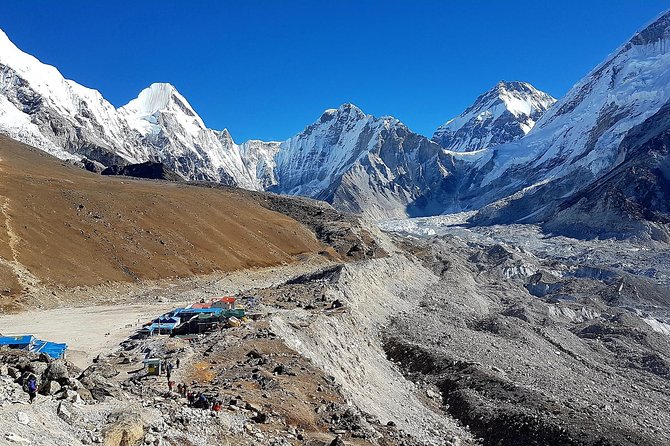
For the Everest Base Camp trekking experience, travelers will rely on a combination of local bus transportation from Kathmandu to Bhandar and a scenic flight from Lukla back to Kathmandu.
The travel logistics for this journey involve a picturesque route that showcases the stunning landscapes of the Himalayas. The local bus ride from Kathmandu to Bhandar offers a glimpse into the local way of life and the chance to see the beautiful countryside along the way.
Once at Lukla, the short but thrilling flight back to Kathmandu provides a bird’s eye view of the majestic mountains and valleys below. These route options not only provide practical transportation but also add to the overall adventure and experience of the Everest Base Camp trek.
Guide and Permits
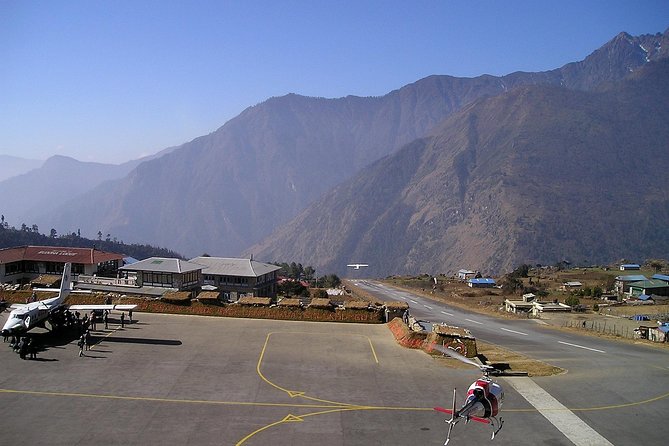
Navigating the Everest Base Camp trek requires securing the guidance of a knowledgeable trekking guide and obtaining the necessary permits for the journey ahead. Here are some key points to consider:
-
Permit requirements: Trekking in the Everest region necessitates obtaining permits such as the Sagarmatha National Park Entry Permit and the Khumbu Pasang Lhamu Rural Municipality Entrance Permit.
-
Regulations: It’s essential to adhere to the regulations set by the local authorities to ensure safety and environmental conservation.
-
Local guide benefits: Engaging a local guide not only enhances the trekking experience but also provides valuable insights into the culture, terrain, and traditions of the region.
-
Experience: A seasoned guide brings in-depth knowledge of the trails, weather patterns, and emergency procedures, enhancing the overall safety and enjoyment of the trek.
Weather Considerations
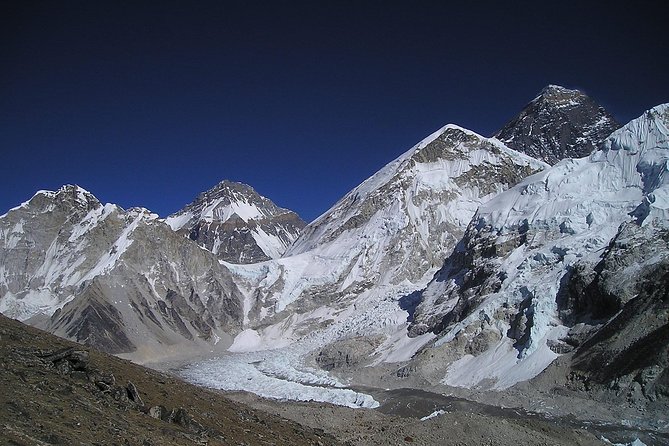
Considering the ever-changing mountain weather, trekkers embarking on the Everest Base Camp journey must remain vigilant and adaptable to ensure a safe and enjoyable experience. It is crucial to be prepared with an equipment checklist that includes proper clothing, sturdy hiking boots, and essential gear. Altitude sickness is a significant concern, so acclimatization days are built into the itinerary to help reduce the risk. Travel insurance is a must, including coverage for emergency evacuation in case of any unforeseen circumstances. Trekkers should familiarize themselves with the signs of altitude sickness and have a plan in place for immediate action if symptoms arise.
| Equipment Checklist | Altitude Sickness |
|---|---|
| Proper clothing | Acclimatization days |
| Sturdy hiking boots | Recognizing symptoms |
| Essential gear | Immediate action |
| Travel Insurance | Emergency Evacuation |
| Coverage for evacuation | Plan in case of emergency |
| Understanding policy coverage | Contact for assistance |
Customer Reviews
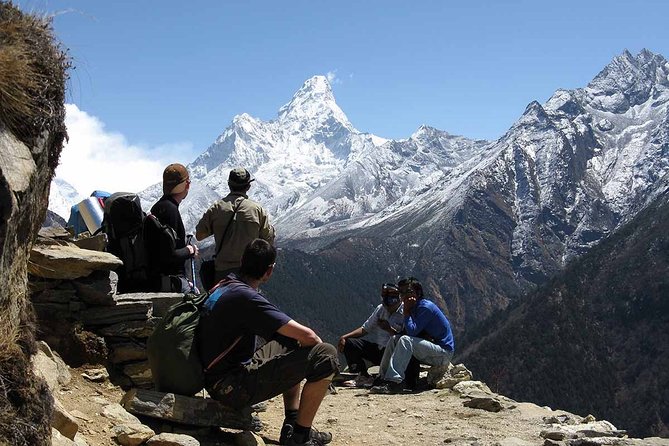
Upon completing their Everest Base Camp trekking experience, adventurers eagerly share their firsthand accounts in detailed customer reviews.
-
Customer Feedback: Reviews often highlight the breathtaking views, challenging yet rewarding trekking trails, and the sense of achievement upon reaching base camp.
-
Service Quality: Many reviews commend the knowledgeable and friendly trekking guides, who enhance the overall experience with their expertise and support.
-
Trip Organization: Customers frequently mention the seamless logistics and well-planned itinerary, ensuring a smooth and enjoyable journey to Everest Base Camp.
-
Trek Experience: Reviews commonly express the awe-inspiring nature encounters, culture with local Sherpa communities, and the camaraderie built among fellow trekkers during the expedition.
Here's a few more nearby tours and experiences we think you'll like.
Frequently Asked Questions
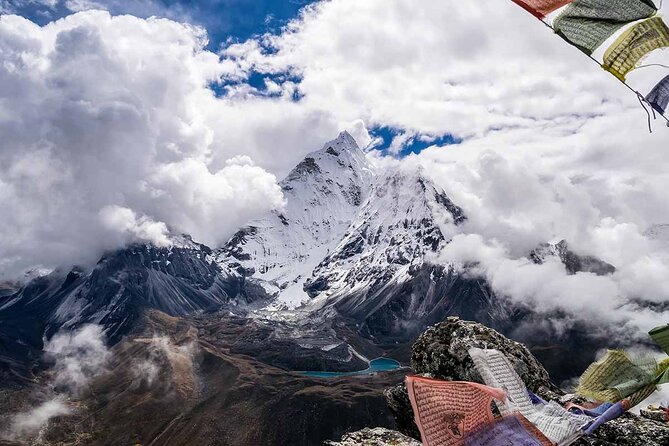
What Are the Recommended Fitness Levels for Completing the Classic Everest Base Camp Trekking?
For completing the Classic Everest Base Camp trekking, recommended fitness levels involve regular cardio and strength training. Training tips include hiking with a backpack, stair climbing, and endurance exercises to prepare for the challenging terrain.
Are There Any Opportunities for Cultural Immersion or Interactions With Local Communities Along the Trekking Route?
Opportunities for culture and interactions with local communities along the trekking route include experiencing local customs firsthand and savoring traditional cuisine. These encounters offer a deeper understanding of the region’s heritage and daily life.
Is There a Specific Packing List or Gear Recommendations for the Trek That Participants Should Be Aware Of?
When preparing for the trek, participants should pack essential items like sturdy hiking boots, layers for varying weather conditions, a warm sleeping bag, and trekking poles. Adequate clothing choices are vital for comfort and safety.
Are There Any Optional Side Trips or Excursions Available During the Trek for Those Looking to Extend Their Adventure?
For those seeking to extend their adventure, side trips and excursions are available during the trek, providing opportunities for acclimatization and additional adventure experiences. These optional activities enhance the overall journey and exploration.
How Does Altitude Sickness Prevention and Management Factor Into the Trekking Itinerary and Planning?
Altitude acclimatization is key to preventing altitude sickness on treks. Guides monitor oxygen levels, recommend hydration, and pace to aid acclimatization. If needed, medication can be used. Prioritizing safety ensures a successful trek.
Not for you? Here's more of our most recent tour reviews happening neaby
- Upper Mustang Trekking – 15 Days
- Everest Helicopter Tour: Experience the Ultimate Aerial Adventure of a Lifetime
- 12 Days Annapurna Circuit Trek
- Private Half-Day Off-Road Safari in Shivapuri-Nagarjun Park – Kathmandu
- Nepal Multisport Adventure Tour
- 7 Days Honeymoon Tour in Nepal
- Nepal Cultural & Adventure
- Bandipur Homestay Tour
- Tibet Tour With Everest Base Camp – FLY IN DRIVE OUT- 8 DAYS
- Day Hiking Near Kathmandu Valley.
- 4 Days Langtang Valley Short Trek
- 12 Days Everest Base Camp Trek in Nepal
- Lobuche East Peak Climb With Everest Base Camp Trek
- 4-Day Kathmandu Valley UNESCO World Heritage Sites Tour
- UNESCO World Heritage Site Tour in Kathmandu
Final Words
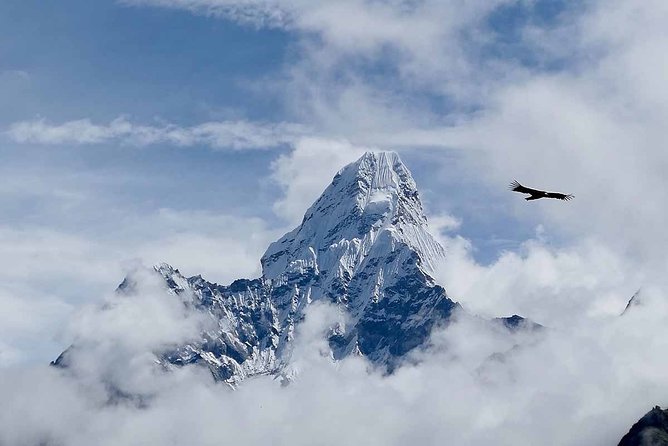
Embark on the adventure of a lifetime with the Classic Everest Base Camp Trekking experience. From expert guides to comfortable accommodations and delicious meals, every aspect of your journey is carefully planned for a seamless and unforgettable expedition.
With stunning views, challenging terrain, and the camaraderie of fellow trekkers, this trek promises to be a once-in-a-lifetime experience that will leave you in awe of the majestic Himalayas.
Don’t miss out on this incredible opportunity to explore Everest Base Camp.

